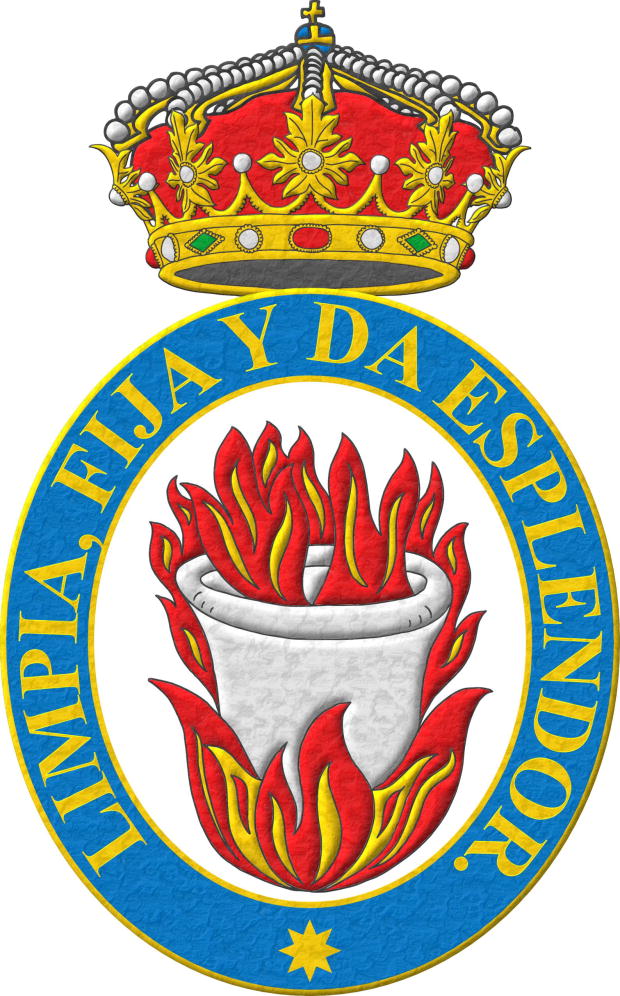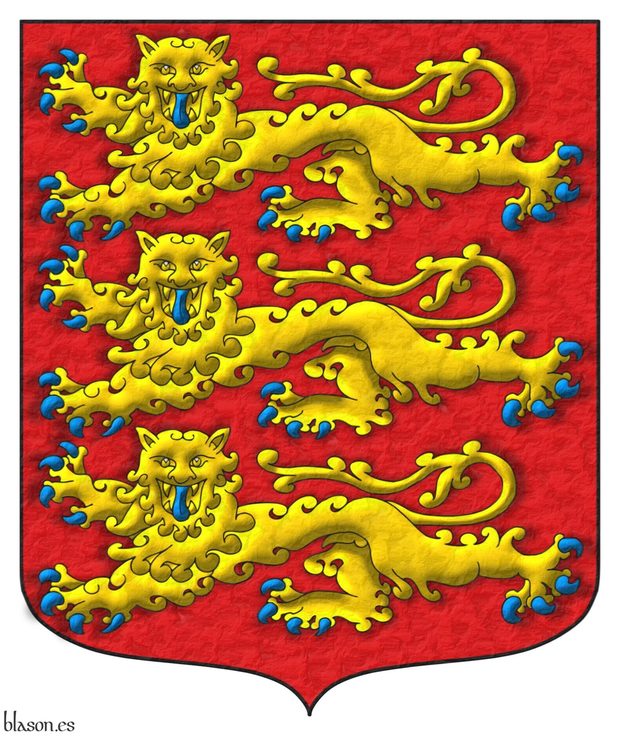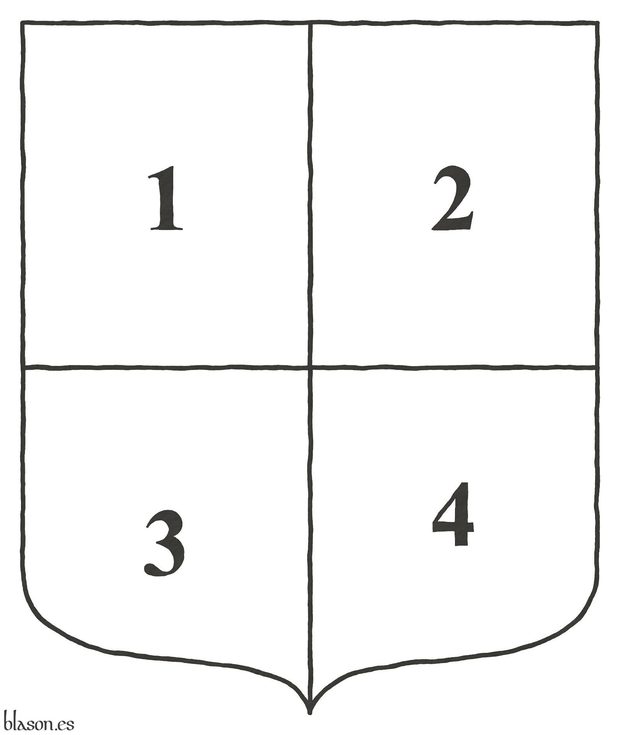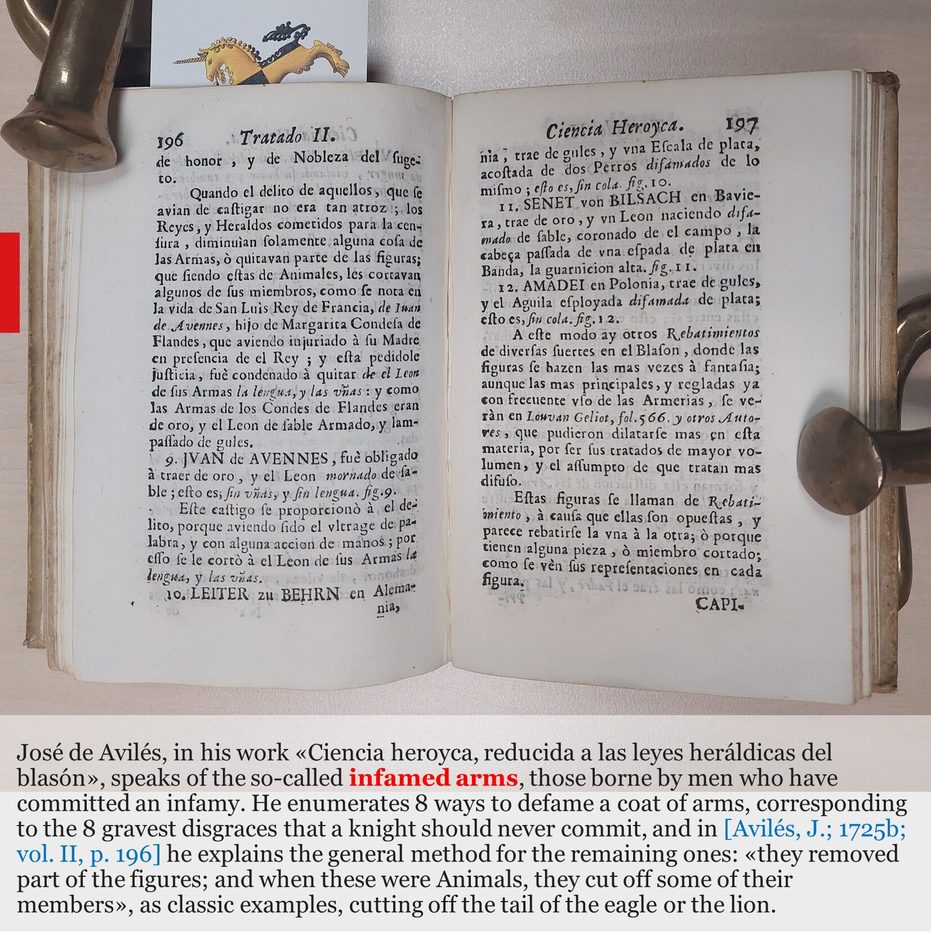
Exercise of ARCO rights

Exercise by mail
The interested parties with personal data in this data file have the right to access, rectify, cancel and oppose (so-called ARCO rights), which can be exercised by addressing the person responsible for the file:
- Antonio Salmeron Cabañas
- Paseo de la Castellana 135, 7th floor
- 28046 Madrid
- Spain
Email exercise
The user who wishes to exercise them more directly can send an email to the following address .


![Ver [Royal Spanish Academy; 2014] en referencias bibliográficas. Libro abierto, hojas de plata, filo de oro, guardas de gules, tapas de sable.](../css/Libro.Bibliografia.png)
Royal Spanish Academy; 2014

Real Academia Española, «Diccionario de la lengua española», known as DRAE, acronym for Diccionario de la Real Academia Española, 23rd edition, Espasa Calpe, Madrid, 2014.
This bibliographic reference of the DRAE is illustrated with one of my interpretations of the emblem of the Real Academia Española. Oval emblem with its crucible over a bonfire, surmounted by a closed Royal crown and its motto «Limpia, fija y da esplendor», around the emblem in letters of Or on Azure.
Bibliographical reference of century XXI.
Classification: Dictionary and Castilian language.
Author: Royal Spanish Academy.
Bibliographical reference mentioned in the following article:
External resource:


Godfrey V, Count of Anjou

And Count of Touraine and Maine, Duke of Normandy, and founder of the Plantagenet dynasty.
Azure, six lions rampant Or, 3, 2 and 1.
Escudo de azur, seis leones rampantes de oro, 3, 2 y 1.
Existing armories interpreted by me as follows: the shield's shape is pointed; the field has been enameled in flat azure; the 6 lions are illuminated; and the entire composition has a watercolor finish.
When blazoning these 6 lions, considering that in heraldry the natural arrangement of elements is from more in chief to fewer in base, it would suffice to specify nothing more than «or and rampant». However, adding their arrangement «3, 2, and 1» can aid the reader, as done by [Avilés, J.; 1725b; page 124] and [Avilés, J.; 1780b; page 142] when blazoning the arms of Alfonso Enrique de Vick, writing «sable, and six bezants or, three, two, and one», meaning 6 ordered elements. In these sequences of number arrangements, I prefer to write Arabic numerals rather than words because, at times, the sequences can be long.
Blazon keywords: Without divisions, Azure, Six, Lion, Or, Rampant and Three, two and one.
Style keywords: Pointed, Illuminated, Outlined in the field tincture and Watercolor.
Classification: Interpreted, Personal, Coat of arms and House of Plantagenet.
Bearer: Godfrey V, Count of Anjou.


Geoffrey Plantagenet

Azure, six lions rampant Or, 3, 2 and 1.
Escudo de azur, seis leones rampantes de oro, 3, 2 y 1.
Existing armories interpreted by me as follows: the shape of the shield is pointed; the field has been enameled in flat azure; the 6 lions are illuminated and cast shadows on the field; and the entire composition has a hammered metal finish.
The shield of Geoffrey V, Count of Anjou is considered the first documented coat of arms in history, dated to 1127, when Henry I of England gifted it to him on the occasion of his marriage to his daughter Matilda of England [The Heraldry Society; 2013].
There is no direct evidence that Henry I possessed a coat of arms, nor that it featured a rampant lion [Humphery-Smith, C.; 1983], but the gift of a shield with 6 lions to his future son-in-law could be an indication of such.
Geoffrey is buried in the Cathedral of Saint Julian in Le Mans, and his tomb is decorated with an enamel depicting him with his shield, where of his 6 lions: 4 are fully visible, and 2 are suggested by their claws.
However, it is possible that both the wedding gift narrative and the enamel on the tomb are from years after his death in 1151, so [Pastoureau, M.; Garvie, F.; 1997; page 18] asserts that «this account was written after Geoffrey's death... and his funerary enamel commissioned by his widow Matilda between 1155 and 1160... therefore it is possible that Geoffrey Plantagenet never had a coat of arms».
Blazon keywords: Without divisions, Azure, Six, Lion, Or, Rampant and Three, two and one.
Style keywords: Pointed, Illuminated, Shaded, Outlined in the field tincture and Metal beaten.
Classification: Interpreted, Personal, Coat of arms and House of Plantagenet.
Bearer: Godfrey V, Count of Anjou.


![Ver [Avilés, J.; 1725b] en referencias bibliográficas. Libro abierto, hojas de plata, filo de oro, guardas de gules, tapas de sable.](../css/Libro.Bibliografia.png)
Avilés, J.; 1725b

José de Avilés e Iturbide, Marquis of Aviles, member of the Supreme Council of War, «Ciencia heroyca, reducida a las leyes heráldicas del blasón: Ilustrada con exemplares de todas las piezas, figuras y ornamentos de que puede componerse un escudo de armas interior y exteriormente, Volume II», dedicated to Juan Bautista de Orendyn (Juan Bautista de Orendáin y Azpilicueta) of His Majesty's Council, printed by Juan Piferrer of the Ángel's Square, 404 pages, Barcelona, 1725.
I also usually consult Volume I of the edition [Avilés, J.; 1780b].
Contents of Volume Two
- Cover page.
- To the reader.
- Errata sheet for each of the treatises.
- Summary of the price.
- Table of the treatises.
- Plate index.
- Warnings.
- 319 pages for its 4 treatises: Treatise I with 6 chapters, Treatise II with 3 chapters, Treatise III with 4 chapters, and Treatise IV with 13 chapters.
- 25 plates with hundreds of coats of arms and illustrative figures arranged at the end of each treatise, as follows: Plates 1 to 16 at the end of Treatise I, Plates 17 to 19 at the end of Treatise II, Plates 20 to 24 at the end of Treatise III, and Plate 25 at the end of Treatise IV.
- Index of terms, words, and figures specific to blazonry.
- Index of cities, titles, and families with coats of arms blazoned in this second volume.
Crown of count
Infamed arms
Bibliographical reference of century XVIII.
Classification: In black and white and Castilian language.
Author: Avilés e Iturbide, José.
Here are the articles quoting this reference:
External resources:
- Valencian Digital Library, records for the Volumes I and II.
- Valencian Digital Library, content of Volume II.
Internal resources: AvilesJ1725.Tomo.II.pdf.


![Ver [Humphery-Smith, C.; 1983] en referencias bibliográficas. Libro abierto, hojas de plata, filo de oro, guardas de gules, tapas de sable.](../css/Libro.Bibliografia.png)
Humphery-Smith, C.; 1983

Cecil Humphery-Smith, FHS - Fellow of The Heraldry Society, «Why three Leopards?», Coat of Arms, COA, An Heraldic Quarterly Magazine, issue 126, The Heraldry Society, Baldock, Hertfordshire, summer of 1983.
The coat of arms illustrating this bibliographic reference is that of the Kingdom of England, which was also that of the queen of Castile Leonor Plantagenet.
Bibliographical reference of century XX.
Author: Humphery-Smith, Cecil.
Bibliographic reference mentioned in the following articles:
External link:
Internal resources: HumpherySmithC1983.3Leopards.docx.

Criteria used by its title

As far as possible, in Blason.es I use the heraldic laws of the coat of arms by Jose de Aviles and Iturbide, marquis of Aviles, in his books in 2 volumes [Avilés, J.; 1725a] and [Avilés, J.; 1725b].
But in some cases, for example: a) when I do not find the criteria in these volumes and I have to consult other authors to whom I refer in the bibliography or b) when the doubt is not so much heraldic as of style, artistic technique, historical, linguistic, etc. After studying the case, I then establish my own criteria or I choose the one that seems to me the best reasoned of other authors and heralds and I leave it here written.
Naturally, I am open and grateful to all possible criticisms to these heraldic criteria, that can be sent to , and to review these criteria always with a spirit of improvement.
~ B ~
~ C ~
~ E ~
- Eight-ball, another version with a terrace in base
- Empresa, conjunto de cargas sobre el campo
- Enterprise, set of charges on the field
~ F ~
~ G ~
~ H ~
~ I ~
- Imaginary heraldry
- In and wise
- In bend and bend sinisterwise
- In bend and bendwise
- In bend and fesswise
- In bend and palewise
- In bend sinister and bend sinisterwise
- In bend sinister and bendwise
- In bend sinister and fesswise
- In bend sinister and palewise
- In fess and bend sinisterwise
- In fess and bendwise
- In fess and fesswise
- In pale and bend sinisterwise
- In pale and bendwise
- In pale and fesswise
- Inescutcheon with the arms of Brutus of Britain
- Invected and engrailed
~ L ~
~ M ~
~ P ~
~ R ~
~ S ~


![Ver [Pastoureau, M.; Garvie, F.; 1997] en referencias bibliográficas. Libro abierto, hojas de plata, filo de oro, guardas de gules, tapas de sable.](../css/Libro.Bibliografia.png)
Pastoureau, M.; Garvie, F.; 1997
Michel Pastoureau and Francisca Garvie, «Heraldry: Its Origins and Meaning», New Horizons collection, edited by Thames and Hudson, London, 1997.
Bibliographical reference of century XX.
The 2 authors are Pastoureau, Michel and Garvie, Francisca.
Bibliographical reference mentioned in the following article:

Continue with: The Heraldry Society; 2013.
-
Language
-
Categories of heraldry
-
Divisions of the field
- Without divisions
- Party per pale
- Party per fess
- Party per bend
- Party per bend sinister
- Tierce
- Tierce sinister
- Tierced per pale
- Tierced per fess
- Tierced per bend
- Tierced pallwise inverted
- Quarterly
- Quarterly per saltire
- Gyronny
- Party per fess, the chief per pale
- Party per pale, the sinister per fess
- Party per fess, the base per pale
- Party per pale, the dexter per fess
- Chapé
- Chaussé
- Embrassé
- Contre-embrassé
- Party per chevron
- Enté
- Enté en point
- Flanched
-
Metals
-
Colours
-
Furs
-
Other tinctures
-
Ordinaries and sub-ordinaries
-
Diminutives of the ordinaries
-
Other charges
-
Inanimate charges from Nature
Atom, Crescent, Diamond, Emerald, Estoile, Increscent, Lightning flash, Moon, Mount, Mullet, Mullet of four points, Orbital, Plough of Ursa Major, Rainbow, Ray of the sun, River, Sea, Snowflake, Sun, Sun in splendour, Trimount and Water.
-
Vegetal charges from Nature
Acorn, Apple, Apple tree, Ash, Bluebonnet, Camellia, Chrysanthemum, Cinquefoil, Cornflower, Dogwood flower, Double rose, Elm, Fleur de lis, Flower, Holm oak, Hop cone, Kapok tree, Laurel, Lily, Linden, Lotus flower, Madonna lily, Oak, Olive tree, Palm tree, Pomegranate, Poplar leaf, Rose, Shamrock, Sunflower, Thistle, Tree, Tulip, Vine and Wheat.
-
Animal charges from Nature
Badger, Bald eagle, Barbel, Barn owl, Bear, Beaver, Beetle, Bighorn sheep, Blackbird, Boar, Brach hound, Bull, Doe, Dog, Dolphin, Dove, Eagle, Elephant, Falcon, Fish, Flame, Fly, Fox, Frog, Goat, Goldfinch, Goose, Heron, Horse, Hummingbird, Jaguar, Lark, Leopard, Lion, Lion passant, Lion rampant guardant, Lioness, Lynx, Male figure, Martlet, Merino ram, Owl, Panther, Parrot, Peacock, Pelican, Pelican in her piety, Puffin, Quetzal, Raven, Roe deer, Rooster, Savage, Seagull, Serpent, She-wolf, Stag, Starling, Tyger, Vulture, Warren hound and Wolf.
-
Parts of natural charges
Arm, Beak, Branch, Caboshed, Chest, Claw, Covert, Dorsal fin, Eagle claw, Ermine spot, Escallop, Feather, Foot (palmiped), Foreleg, Forepaw, Hand, Head, Heart, Hoof, Leaf, Neck, Ostrich feather, Palm frond, Paw, Roe deers' attires, Shoulder, Sprig, Stags' attires, Stem, Swallow-tail, Tail, Tail addorsed, Tail fin, Talon, Tooth, Trunk, Trunk (elephant), Two hands clasped, Two wings in vol, Udder, Wheat spike, Wing and Wrist.
-
Artificial charges
Ace of spades, Anchor, Anvil, Arch, Arm vambraced, Armillary sphere, Arrow, Axe, Bell, Bell tower, Beret, Bonfire, Book, Bookmark, Bow, Bridge, Broken, Buckle, Cannon, Cannon dismounted, Cannon port, Carbuncle, Castle, Celtic Trinity knot, Chain, Chess rooks, Church, Clarion, Clay pot, Closed book, Club, Comb, Compass rose, Conductor's baton, Cord, Covered cup, Crozier, Crucible, Cuffed, Cup, Cyclamor, Dagger, Double vajra, Drum, Ecclesiastical cap, Fanon, Federschwert, Fleam, Four crescents joined millsailwise, Galician granary, Garb, Gauntlet, Geometric solid, Grenade, Halberd, Hammer, Harp, Host, Hourglass, Key, Key ward, Knight, Knot, Lantern, Letter, Line, Loincloth, Menorah, Millrind, Millstone, Millwheel, Monstrance, Mortar, Mullet of six points pierced, Nail, Non-classic artifact, Norman ship, Number, Oar, Oil lamp, Open book, Page, Pair of scales, Parchment, Pestle, Piano, Plough share, Polish winged hussar, Portcullis, Potent, Quill, Ribbon, Rosette of acanthus leaves, Sabre, Sackbut, Sail, Scroll, Scythe, Sheaf of tobacco, Ship, Skirt, Spear, Spear's head, Star of David, Sword, Symbol, Tetrahedron, Torch, Tower, Trident, Trumpet, Turret, Two-handed sword, Wagon-wheel, Water-bouget, Wheel, Winnowing fan and With a turret.
-
Immaterial charges
Angel, Archangel, Basilisk, Dragon, Dragon's head, Garuda, Golden fleece, Griffin, Heart enflamed, Mermaid, Our Lady of Mercy, Ouroboros, Paschal lamb, Pegasus, Phoenix, Sacred Heart of Jesus, Saint George, Sea-griffin, Trinity, Triton, Unicorn, Winged hand and Wyvern.
-
External elements
-
Heraldic creations
-
References
-
Formats
-
Keywords on this page
Watercolor, Pointed, Armed, Azure, Bibliography, Surmounted, Head, House of Plantagenet, Crown, Crown of Count, Closed royal crown, Crucible, Quarterly, Outlined in the field tincture, Within, Dictionary, Emblem, In black and white, In the fess point, In pale, The eyes, Coat of arms, Schema, Scroll, Flory, Personal, Godfrey V, Count of Anjou, Gules, Bonfire, Illuminated, Infamed, Interpreted, Langued, Legal notice, Motto, Castilian language, Leopard, Lion, Enflamed, Metal beaten, Or, Oval, Party per pale, Without divisions, Rampant, Six, Century XX, Century XXI and Three, two and one.

